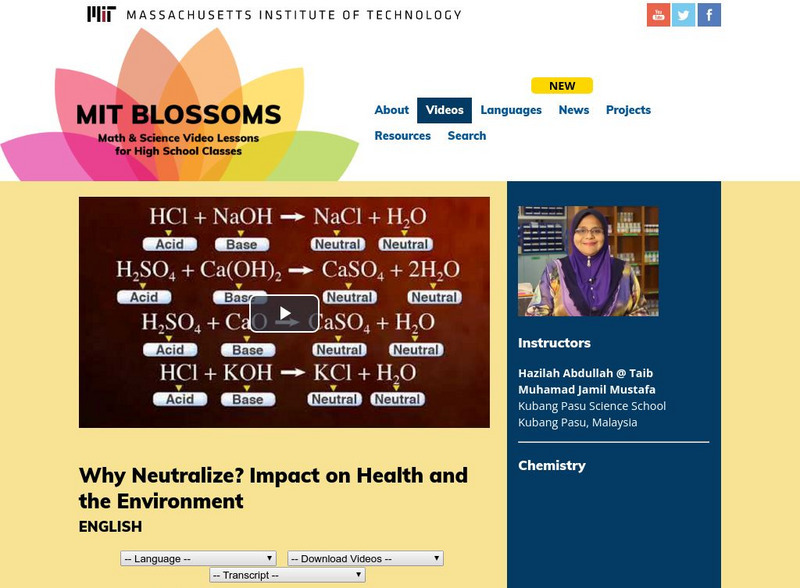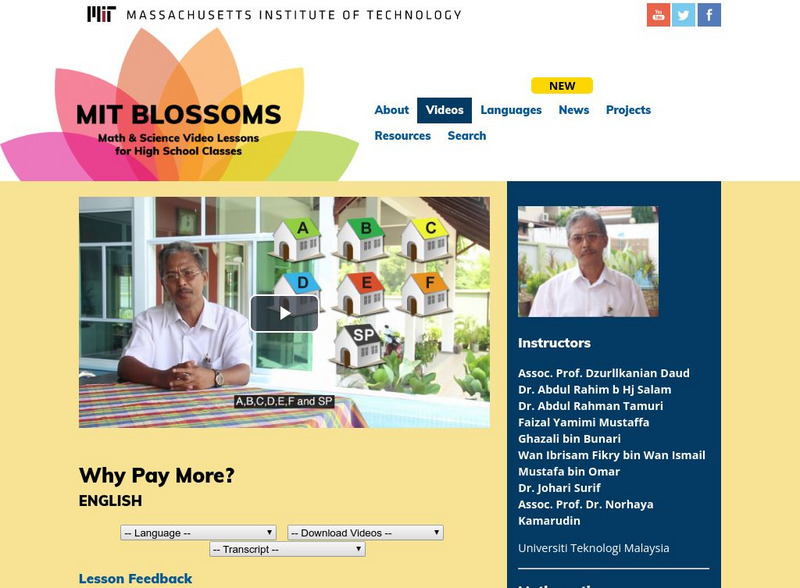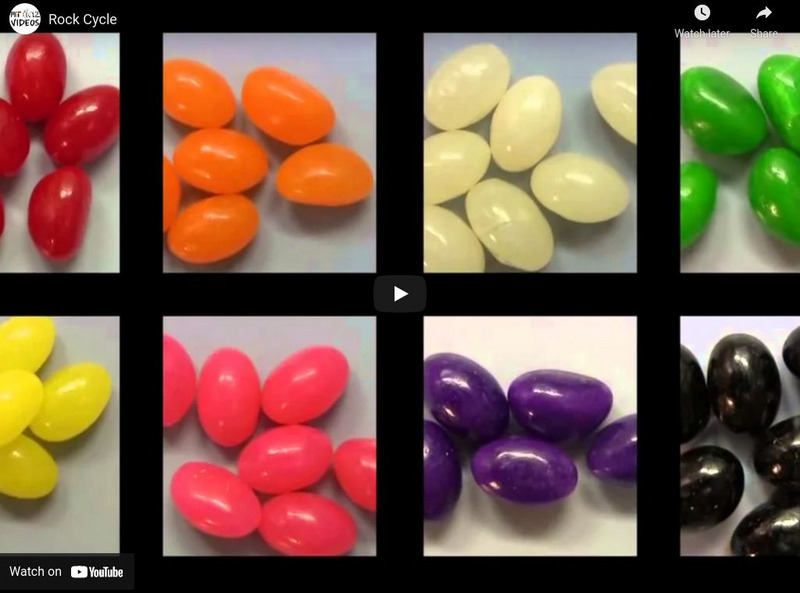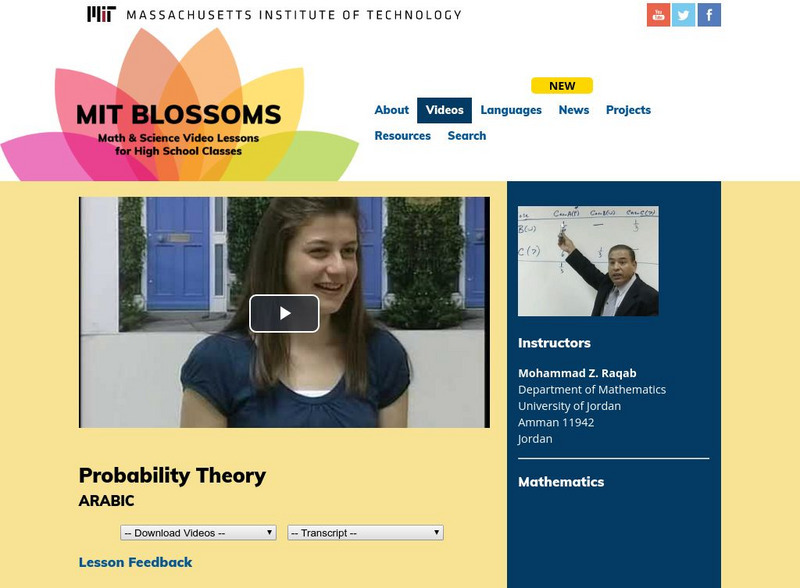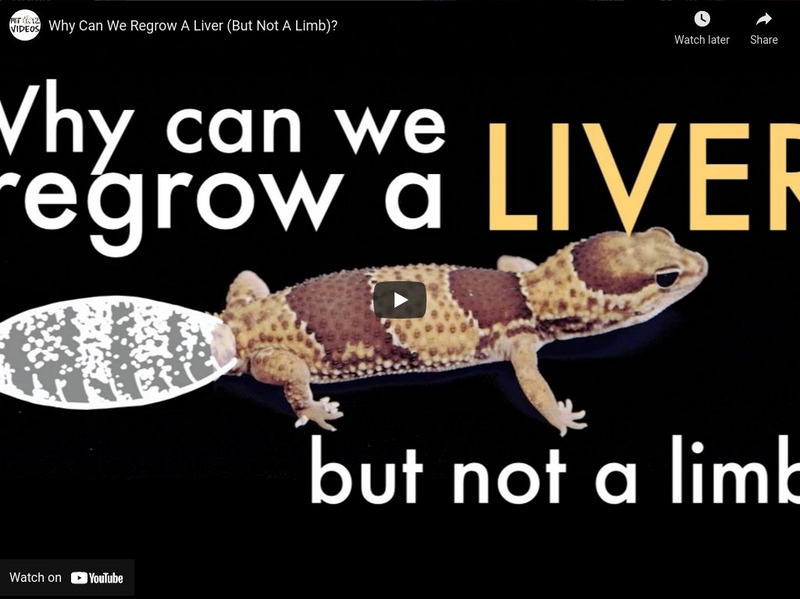Hi, what do you want to do?
Massachusetts Institute of Technology
Mit: Blossoms: Using Dna to Identify People
This lesson focuses on the molecular biology technique of DNA fingerprinting: what it is, how it works, and how the data from these experiments are used for paternity testing and forensics. [45:48]
Massachusetts Institute of Technology
Mit: Blossoms: Using Geometry to Design Simple Machines
This video is meant to be a fun, hands-on session that gets students to think hard about how machines work. It teaches them the connection between the geometry that they study and the kinematics that engineers use - explaining that...
Massachusetts Institute of Technology
Mit: Blossoms: What's in an Eye? The Eye's Components and Diseases
The major purpose of this lesson is to promote the learning of eye function by associating eye problems and diseases to parts of the eye that are affected.
Massachusetts Institute of Technology
Mit: Blossoms: Why Are the Sky Blue and the Leaves Green?
This learning video is designed to encourage students to be curious about things they experience in their everyday lives. It emphasizes the importance of questioning and searching for answers. To demonstrate this, simple questions like,...
Massachusetts Institute of Technology
Mit: Blossoms: Why Neutralize? Impact on Health and the Environment
The aim of this lesson is to introduce the concept of Neutralization and its application in our daily lives. Students are encouraged to construct their knowledge of Neutralization through brainstorming sessions, experiments, and mind...
Massachusetts Institute of Technology
Mit: Blossoms: Why Pay More?
This lesson is an introduction to Multiple Regression Analysis or MRA, a statistical process used widely in many professions to estimate the relationship among variables. The aim of this video is to make it easier for students to...
Massachusetts Institute of Technology
Mit: Blossoms: Wind and Sand
The goal of this video lesson is to relate physics principles to natural phenomena, while simultaneously incorporating the context of global and environmental issues. [47:36]
Massachusetts Institute of Technology
Mit: Blossoms: Why Beehive Honeycombs Have a Hexagonal Shape
In this video [26:45], students discover why honeybees make such great engineers by studying the underlying mathematics and design of their beehives.
Massachusetts Institute of Technology
Mit: Science Out Loud: Rock Cycle
We bet you thought that rocks are just rocks, but the truth is there are three different kinds of rocks. Learn the differences between sedimentary, metamorphic and igneous rocks. [4:31]
Massachusetts Institute of Technology
Mit: Blossoms: Averages: Still Flawed
This learning video continues the theme of an early BLOSSOMS lesson, Flaws of Averages, using new example- including how all the children from Lake Wobegon can be above average, as well as the Friendship Paradox. The objective of this...
Massachusetts Institute of Technology
Mit: Blossoms: Fingerprinting Gravity
This very interactive video lesson uses the Simple Pendulum experiment to enable students to answer the fundamental question: What is the value of g in my school and in my home? Students will learn to calculate this value by working in...
Massachusetts Institute of Technology
Mit: Blossoms: Flaws of Averages
This learning video presents an introduction to the Flaws of Averages using three exciting examples: the "crossing of the river" example, the "cookie" example, and the "dance class" example. Averages are often worthwhile representations...
Massachusetts Institute of Technology
Mit: Blossoms: Probability Theory
The main objective of this lesson is to motivate students' thoughts and get them excited about some probability concepts. The aim is to present probability theory in as simple a manner as possible. It is hoped that students will learn...
Massachusetts Institute of Technology
Mit: Blossoms: The Art of Making Layer Cakes: Construction of Bituminous Roads
The aim of this video is to introduce high school students to the engineering concept of road construction and to the reasons why problems might arise in road construction. Presentation of this concept is made more accessible to students...
Massachusetts Institute of Technology
Mit: Blossoms: The Pythagorean Theorem: Application and Proof
In this video lesson, students will not only learn about Pythagoras and the Pythagorean Theorem, but they will also demonstrate a proof of this theorem, use it to solve problems, and create their own real world problems to challenge the...
Massachusetts Institute of Technology
Mit: Blossoms: Uniform Circular Motion and Centrifugal Force
The objective of this video lesson is to correct the misconception in the students' understanding of centrifugal force. The lesson will work to clarify this misconception by using Newton's three laws of motion, particularly the law of...
Massachusetts Institute of Technology
Mit: Open Course Ware: Tech Tv: Death of a Gummy Bear
Watch as the instructor shows what happens when a gummy bear is heated in a test tube. Figure out how much energy is produced. [6:18]
Massachusetts Institute of Technology
Mit: Blossoms: Guess the Last Ball: An Exercise in Mathematical Modeling
This video lesson uses the technique of induction to show students how to analyze a seemingly random occurrence in order to understand it through the development of a mathematical model. [41:24]
Massachusetts Institute of Technology
Mit: Science Out Loud: Engineering River Cleanups
Figuring ways to clean up contaminated waters is a huge challenge. But luckily, a simple piece of plastic that mimics fish fat can help! [3:05]
Massachusetts Institute of Technology
Mit: Science Out Loud: The Physics of Skydiving
When you fall thousands of feet from the sky, it seems like something strange is happening with the laws of physics. Turns out, everything relies on a simple force - DRAG! Watch these MIT students demonstrate fun moves while skydiving!...
Massachusetts Institute of Technology
Mit: Science Out Loud: What Is a Fractal?
Fractals are complex, never-ending patterns created by repeating mathematical equations. Yuliya, an undergrad in Math at MIT, delves into their mysterious properties and how they can be found in technology and nature. [4:12]
Massachusetts Institute of Technology
Mit: Science Out Loud: Creating Invisibility Cloaks
It's not just movie magic - invisibility cloaks could be feasible, just by manipulating the crazy ways that light bounces, bends, and mixes! Prashanth and Maria take you behind the physics of light and how an invisible cloak could...
Massachusetts Institute of Technology
Mit: Science Out Loud: What Is a Semi Conductor
Semiconductors are in everything from your cell phone to rockets. But what exactly are they, and what makes them so special? Find out from Jamie, a Ph.D. student in Electrical Engineering and Computer Science at MIT. [4:45]
Massachusetts Institute of Technology
Mit: Science Out Loud: Why Can We Regrow a Liver but Not a Limb?
Unlike lizards, humans can't regrow limbs. But we can kinda-sorta regenerate our livers. Ceri, an undergrad in Biology and Comparative Media Studies at MIT, explains how and why. [4:06]









